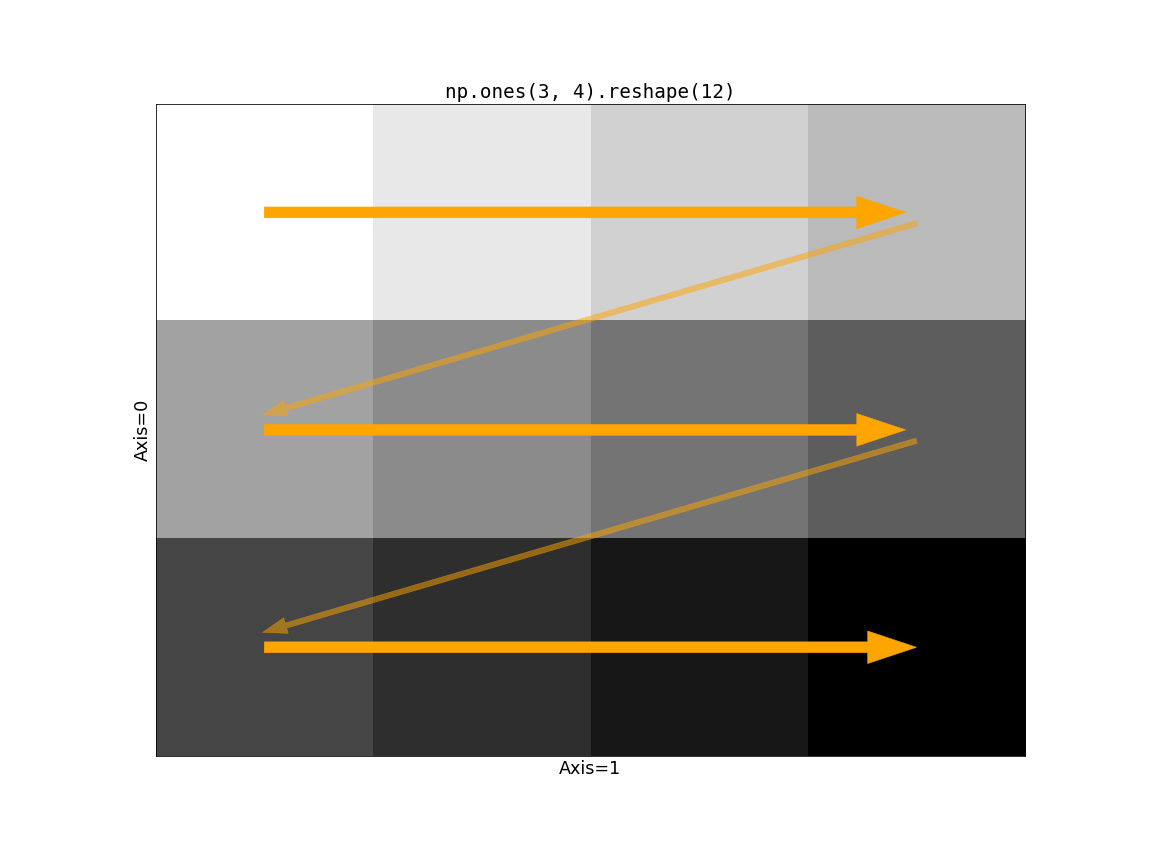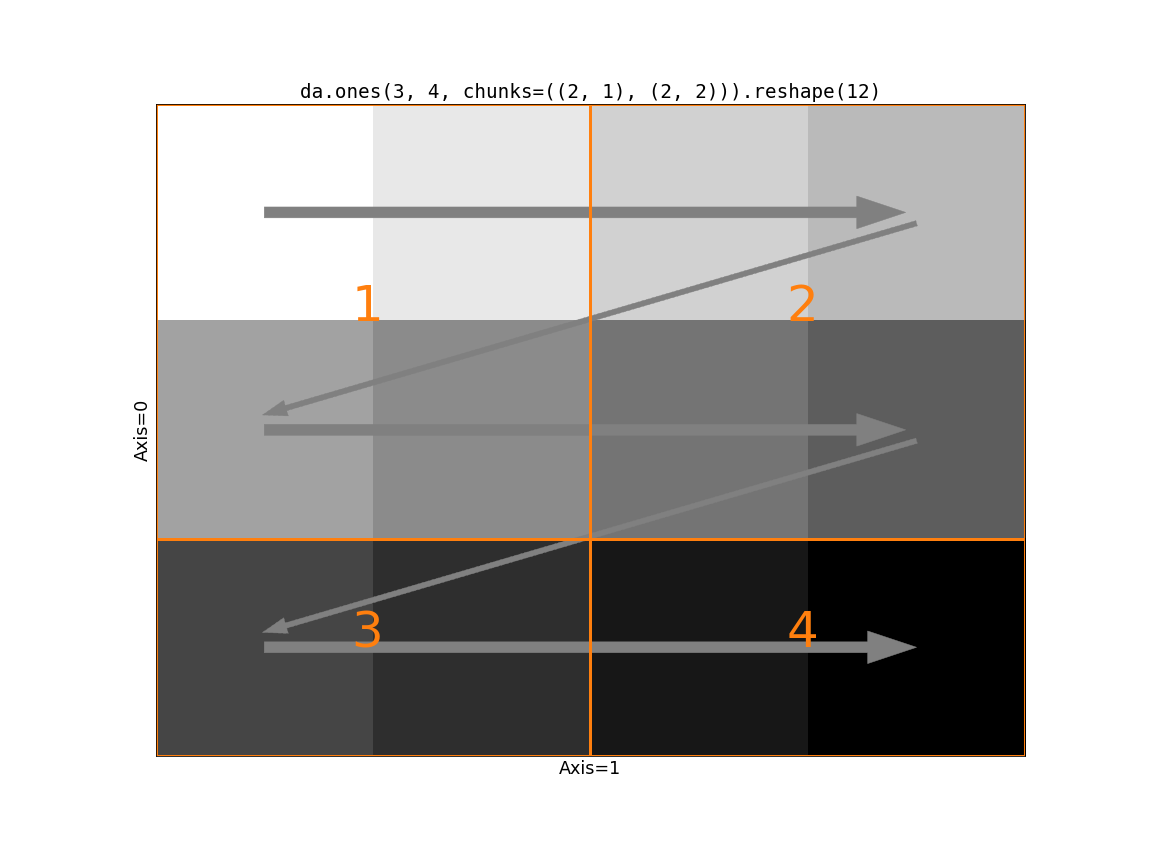Reshape
Dask array can be reshaped using dask.array.reshape method.
a = da.ones((3, 4), chunks=(2, 2))
a.reshape((3, 2, 2))Reshape in dask array is not similar as numpy reshape because dask arrays have chunks and doing reshaping requires some re-alignment or re-chunking of the chunks. The re-chunking has to be done to make it compatible with the output shape.
Fast moving axes
Axes with less strides. In 2D array, axis=1 is . In re-chunking operation, we move across the fast moving axes and then goes to the next fasting moving axis.
 |
|---|
| figure: Moving across axes for reshaping |
If we have chunk size greater than 1 for slow axis (axis=0), then some of the values in the block will be left while moving left to right along the axes. |
For example, for below array the first block is of shape (2, 2) and while moving left to right, the block still got two values left at the bottom.
 |
|---|
| figure: Problem with reshape with chunk size more than 1 on slow axis |
Reshaping of the following dask array with chunks defined would require to do re-chunking.
da.ones((3, 4), chunks=((2, 1), (2, 2))).reshape(12)dask.array.reshape method has logic to do re-chunking by merging the chunks or splitting the chunks on slow axis to 1 chunk size. We can handle this using parameter merge_chunks. By default reshape does merge chunks.
dask_array.reshape(12, merge_chunks=False)